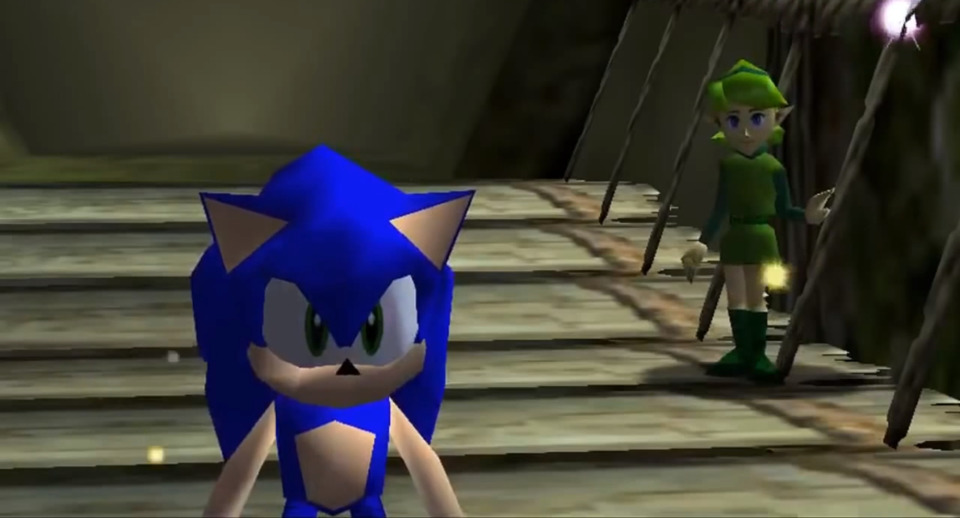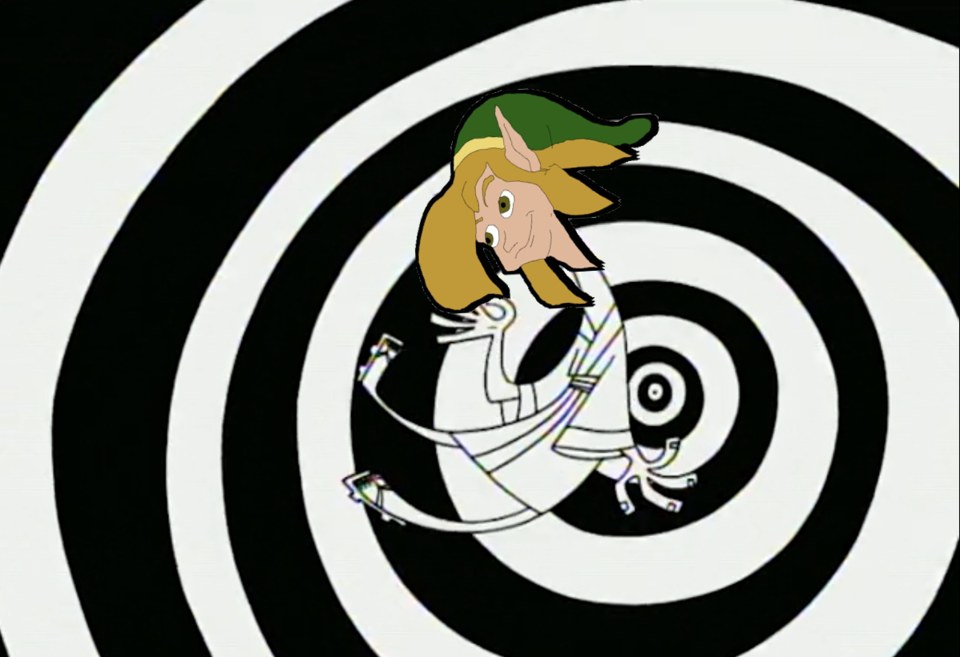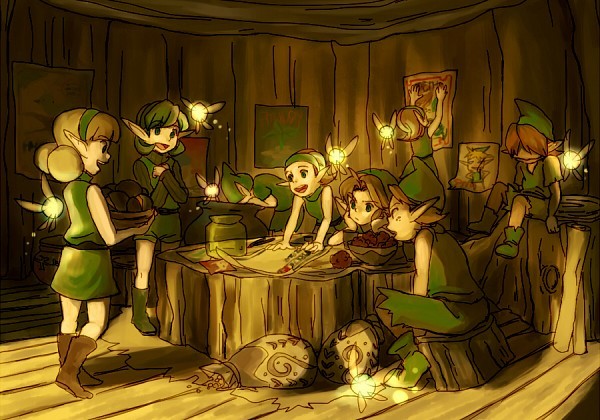Unlinked from the past
By PurpleShyGuy 0 Comments
Loss and nostalgia in Kokiri Forest
As you might know, the inspiration for the very first Zelda was conjured from the mind of Shigeru Miyamoto. To be more specific, it was his time spent exploring the hillsides of his home town Sonobe, which featured lakes, caves and forests that he drew inspiration from. The sense of adventure that came with traveling to and beyond these places provided the foundation of the Zelda series, a foundation which can still be seen today with Breath of the Wild and its many tantalising horizons. However, if I had to pick a single location that expresses what a young Miyamoto must have felt like exploring Sonobe, it would be the playful and mysterious Kokiri Forest in the Ocarina of Time.
At the beginning of the game, Link awakes in Kokiri Forest, a small village inhabited by a tribe of children imaginatively called the Kokiri. Link begins his quest by buying a shield and finding a sword protected by perpetually rolling boulders (the magic of the forest is strange indeed), so he can prove his worth to the eternal twerp Mido and gain an audience with the Great Deku Tree. Once he does, the Great Deku Tree asks Link to go inside him – try not to think too hard about that – and kill Queen Gohma along with her brood.
Accomplishing his task, the Great Deku Tree tells Link that he must leave the safe cradle of Kokiri Forest and venture to Hyrule to save it from its destine destruction. But the rub is that Kokiri die if they leave the forest, leaving everyone to wonder if this will be the last time they will ever see Link – and in some respects, it will be. Before Link goes on his merry way he’s stopped by Saria, his closest friend, to bid him a farewell that is surprisingly effective at tugging the heartstrings.

He doesn’t drop dead at the entrance of the forest, of course. Instead, Link presses on, slaying monsters and saving people all across Hyrule until he acquires the three Super Sacred Magical Shiny Gems (I believe the wiki mistakenly calls them Spiritual Stones). Link then enters the Temple of Time to obtain the Master Sword. Unfortunately, the temple decides to seal Link inside until he is old enough to actually swing the sword without toppling over, resulting in him losing seven years of his life. When he’s free, the first port of call is to return to Kokiri Forest to wrestle it back from Ganondorf, who has unleashed his wrath on the entirety of Hyrule.
As expected, Kokiri Forest is overrun, but what is less expected is that none of the Kokiri have aged a day. Furthermore, none of them recognise Link either, all except for Saria who has been captured and held within the aptly named Forest Temple. Link heads inside, beats Phantom Ganon in a game of hot potato and rescues Saria, who then explains to Link that she must ascend to become a Sage and help save Hyrule. This event marks one of the last times you'll ever see her, meaning it really is coming close to that final goodbye. While I know there is some romantic implications between Link and Saria, I also know that the Hylian authorities would launch an investigation into why a grown man is going deep into a forest with a child.
It’s not all doom and gloom, however, as there are some aspects that make this all somewhat less tragic. For starters, Link makes one last trip back in time at the end of the game, finally reclaiming his lost seven years. I assume the awakening of the Sages and the sealing away of Ganondorf happens outside of time, otherwise Zelda done goofed by sending Link back. Also, at the I’m-glad-we-won’t-see-that-Ganondorf-guy-ever-again party everyone has at Lon Lon Ranch, you clearly see the Kokiri living it up outside the forest. I guess the Great Deku Tree also had a great big bag of lies inside him along with a huge spider monster with a giant eyeball. Still, it’s a bittersweet reunion with Link and the Kokiri, not only does no one believe that he is actually Link because of his adult stature, but also his best friend is gone forever. The twist that you might have guessed beforehand is that Link is Hylian, not Kokiri. During a civil war, baby Link was taken from Hyrule by his dying mother to the safety of the forest. Saria alludes to knowing about Link’s Hylian roots from the start, which is why she let him go so easily on the bridge seven years ago.

The reason why I regard this part of Ocarina of Time to be my favourite from a story standpoint, is because it deals with childhood nostalgia in such an effective manner. When Link returns to Kokiri Forest, he finds himself out of time with everyone else, he’s grown up and set for bigger things, while everyone else has remained the same. He’s no longer a part of the town he grew up in, no longer part of its community, and with Saria gone there’s no real point to ever come back. In an interview with Shigeru Miyamoto, he stated that the Kokiri simply disappear after a certain age with a new generation appearing to replace them. It lends credence to the idea that the village and its people can be considered a moment in time or in one’s life. In addition, the name Kokiri is generally agreed upon to be a mixture of the Japanese words "Ko" (child) and "Ki" (tree), but the word "Kiri" can also mean mist or fog, perhaps referring to their ephemeral nature.
All of this gets me thinking about my own childhood, right down to the fact that the people you knew back then never stop being kids in your mind, much like the Kokiri themselves. Those happy, carefree days of living without all that equally boring, equally terrifying adult business, is conveyed in Kokiri Forest. But as we all know childhood is fleeting, and once you get older you can never really go back. It’s a sad, hard truth, but one that ultimately gives way to new and exciting experiences. The world is far bigger than the forests of Sonobe after all.

